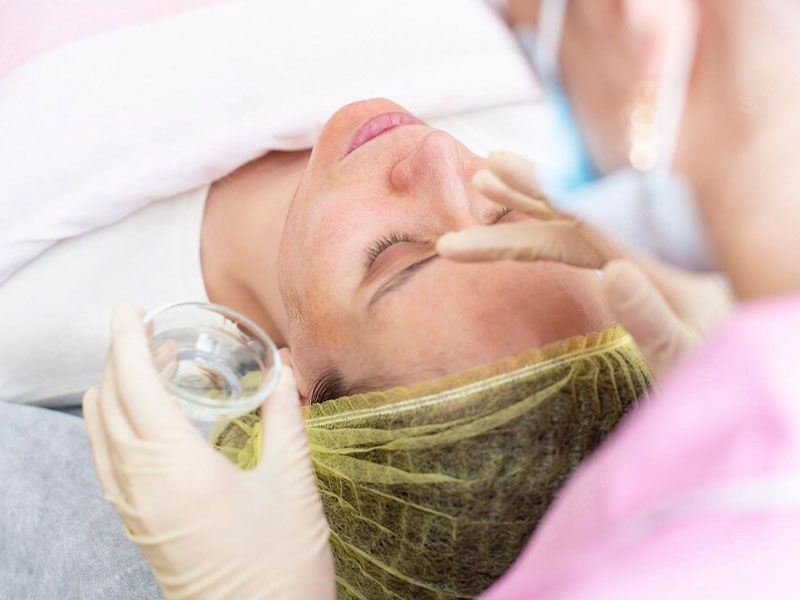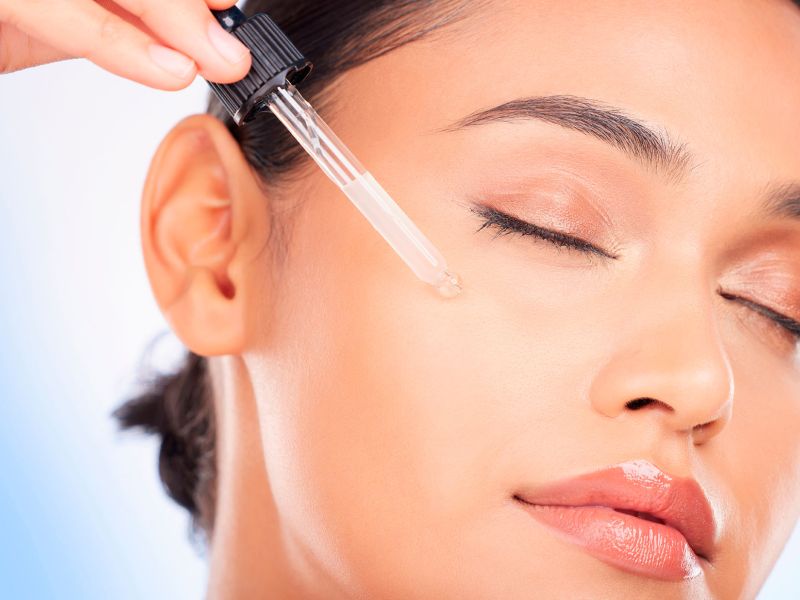How does The Chemical Peel Process Help Make Your Skin Smooth and Fine?

Chemical peels have become a popular and effective method for achieving smoother and finer skin. This dermatological procedure involves the application of a chemical solution to the skin, which causes it to exfoliate and eventually peel off. The result is a rejuvenated and revitalized complexion. In this article, we will explore the chemical peel process and how it can help you attain smoother and finer skin.
The Chemical Peel Process
Preparation: Before undergoing a chemical peel, it’s crucial to consult with a qualified dermatologist or skincare professional. They will assess your skin type, concerns, and goals to determine the most suitable peel for you. There are different types of chemical peels, including superficial, medium, and deep peels, each catering to specific skin issues.
Cleansing: The process begins with cleansing the skin thoroughly to remove any makeup, dirt, and oil. This ensures that the chemical solution can penetrate the skin effectively.
Application of the Chemical Solution: The dermatologist will then apply the chosen chemical solution to your skin. The type and strength of the solution depend on your skin’s needs and the desired outcome. Superficial peels typically use milder acids like alpha hydroxy acids (AHAs) or beta hydroxy acids (BHAs), while medium and deep peels may use stronger acids like trichloroacetic acid (TCA) or phenol.
Reaction Phase: After the chemical solution is applied, you may experience a warm or tingling sensation. This is normal and indicates that the solution is working to exfoliate the top layers of your skin. The reaction time varies depending on the peel’s depth and your skin’s sensitivity.
Neutralization (for Medium and Deep Peels): Medium and deep peels require a neutralizing solution to stop the chemical reaction. This step is crucial in preventing the solution from penetrating too deeply into the skin.
Peeling: Over the next few days to a week, the treated skin will start to peel and shed. This is a natural part of the process as the old, damaged skin is sloughed off, revealing smoother, younger-looking skin underneath.
Post-Peel Care: It’s essential to follow your dermatologist’s post-peel instructions diligently. This may include using gentle skin care products, avoiding sun exposure, and applying sunscreen and moisturizer regularly to protect the newly exposed skin. Additionally, it is advisable to follow any other recommendations given by your doctor.
How Chemical Peels Improve Skin Texture
Now that we have outlined the chemical peel process, let’s delve into how it helps make your skin smooth and fine.
Exfoliation: The primary mechanism behind the effectiveness of chemical peels is exfoliation. By removing the outermost layer of dead skin cells, chemical peels reveal fresher, healthier skin beneath. This exfoliation process not only smoothens the skin but also helps unclog pores, reducing the risk of acne and blackheads.
Collagen Stimulation: Chemical peels can stimulate the production of collagen, a protein that gives skin its elasticity and youthful appearance. As we age, collagen production decreases, leading to sagging skin and wrinkles. By encouraging collagen synthesis, chemical peels can help firm and tighten the skin.
Fading Hyperpigmentation: Chemical peels are effective in fading various forms of hyperpigmentation, such as age spots, sunspots, and melasma. The exfoliation process removes the pigment-containing cells on the surface, and over time, the new skin that emerges is often more even-toned.
Acne Scar Reduction: Chemical peels can significantly improve the appearance of acne scars. They work by removing the damaged outer layers of skin and by stimulating collagen , which can make scars appear shallower and less noticeable. For deep acne scars, multiple sessions may be required.
Fine Line and Wrinkle Reduction: Chemical peels, especially medium and deep peels, can address fine lines and wrinkles. By removing the damaged skin layers and stimulating collagen production, they can help smoothen and plump the skin, reducing the appearance of lines and wrinkles.
Treatment Customization: One of the advantages of chemical peels is their versatility. They can be customized to target specific skin concerns and tailored to individual skin types, ensuring optimal results.
In conclusion, the chemical peel process is a highly effective method for achieving smoother and finer skin. By promoting exfoliation, stimulating collagen production, and addressing various skin issues, chemical peels can rejuvenate your complexion and restore a youthful glow. However, it’s essential to consult with a qualified skincare professional to determine the most suitable peel for your skin type and concerns. With proper care and maintenance, chemical peels can help you achieve the smooth and fine skin you desire.
Other Recent BLogs
-
 Skin Care for All Seasons, Adjusting Your Routine to Weather’s Whims
Skin Care for All Seasons, Adjusting Your Routine to Weather’s Whims -
 The Role of Stress in Skin Health: Managing Your Complexion in High-Pressure Times
The Role of Stress in Skin Health: Managing Your Complexion in High-Pressure Times -
 Understanding the Differences Between Teen and Adult Acne: A Guide from Elara
Understanding the Differences Between Teen and Adult Acne: A Guide from Elara -
 Should I Stop Using Moisturizers and Sunscreen Because I Have Acne-Prone Skin? Skincare Routine for Acne-Prone Skin
Should I Stop Using Moisturizers and Sunscreen Because I Have Acne-Prone Skin? Skincare Routine for Acne-Prone Skin -
 Skincare Care Routine For Acne Prone Skin
Skincare Care Routine For Acne Prone Skin -
 Salicylic Acid Treatment For Acne
Salicylic Acid Treatment For Acne -
 Understanding Acne And It’s Treatment
Understanding Acne And It’s Treatment -
 Chemical Peel vs. Carbon Peel: What’s The Difference?
Chemical Peel vs. Carbon Peel: What’s The Difference?









